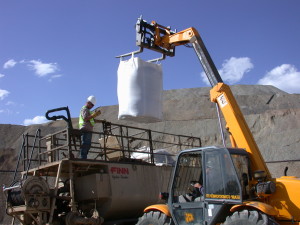Doing It Once, Doing It Right
The extraction of minerals and energy from the earth invariably necessitates a disturbance of pristine environment. That is in direct conflict with an often-overlooked best management practice (BMP) for controlling erosion: don’t disturb the soil in the first place.
Fortunately, the emphasis of the extractive industries has changed significantly over the past two decades since I first entered the reclamation business. Traditionally mining companies had focused on managing a mineral resource. The game has changed to the point they now acknowledge they also have a broader natural resource to manage. Increasingly mining companies are tackling the formidable task of measuring and reporting both their positive and negative long-term impact on the environment and society.
 Why? A company cannot find and extract minerals if it cannot access land. Part of the price for gaining future access to land is to meet stakeholder expectations about how companies should currently be managing their land. The strong message our environmentally enlightened society is sending to companies who must disturb the land is that approvals for future projects will only be won if the company can demonstrate that they are appropriately managing current projects. Regulatory pressure supplying teeth to this societal pressure is increasing almost everywhere.
Why? A company cannot find and extract minerals if it cannot access land. Part of the price for gaining future access to land is to meet stakeholder expectations about how companies should currently be managing their land. The strong message our environmentally enlightened society is sending to companies who must disturb the land is that approvals for future projects will only be won if the company can demonstrate that they are appropriately managing current projects. Regulatory pressure supplying teeth to this societal pressure is increasing almost everywhere.
Accordingly, in the pursuit of demonstrating good stewardship of the environment it becomes critically important to implement successful reclamation in a timely manner. Progressive, successful reestablishment of the native environment is critical to demonstrating a mine’s operational capability, and to creating confidence among stakeholders about current and future mine projects.
At Quattro, we have long stated that “Doing it once, doing it right” is the most cost-effective way to manage reclamation activities. Empirical data now exists highlighting the economic benefits of completing reclamation successfully the first time around. Reclamation failures can result in a 50% cost increase over the cost of planning for and implementing proper, and successful, reclamation techniques from the outset of the project. Or to put it another way, the low bid (as opposed to best value) option is notoriously the most expensive way to discharge one’s reclamation obligations.
The study addresses the economic impacts associated with both the direct costs and indirect costs of unsuccessful reclamation. The significant economic impacts associated with the direct costs reflect the additional earthwork for sediment clean-up and regrading, the costs of importing topsoil or applying soil amendments when poor soil conditions generate initial revegetation failures, the obvious repeat costs of re-seeding and re-installation of erosion control products, and the costs of weed control.
 The hidden indirect costs include environmental manager and consultant time to coordinate reclamation work that needs to be redone, potential agency fines for stormwater management violations, and potential lost opportunity cost due to poor agency and landowner relationships that delay mineral extraction.
The hidden indirect costs include environmental manager and consultant time to coordinate reclamation work that needs to be redone, potential agency fines for stormwater management violations, and potential lost opportunity cost due to poor agency and landowner relationships that delay mineral extraction.
The study highlighted the importance of the need for environmental managers to set up a system for cost data collection to establish credible reclamation budgets. Providing reasonable estimates for reclamation activities that can be applied to capitalizing reclamation costs up front on future projects would ensure resource protection. Economic Benefits of Completing Reclamation Successfully the First Time for Oil & Gas Sites

